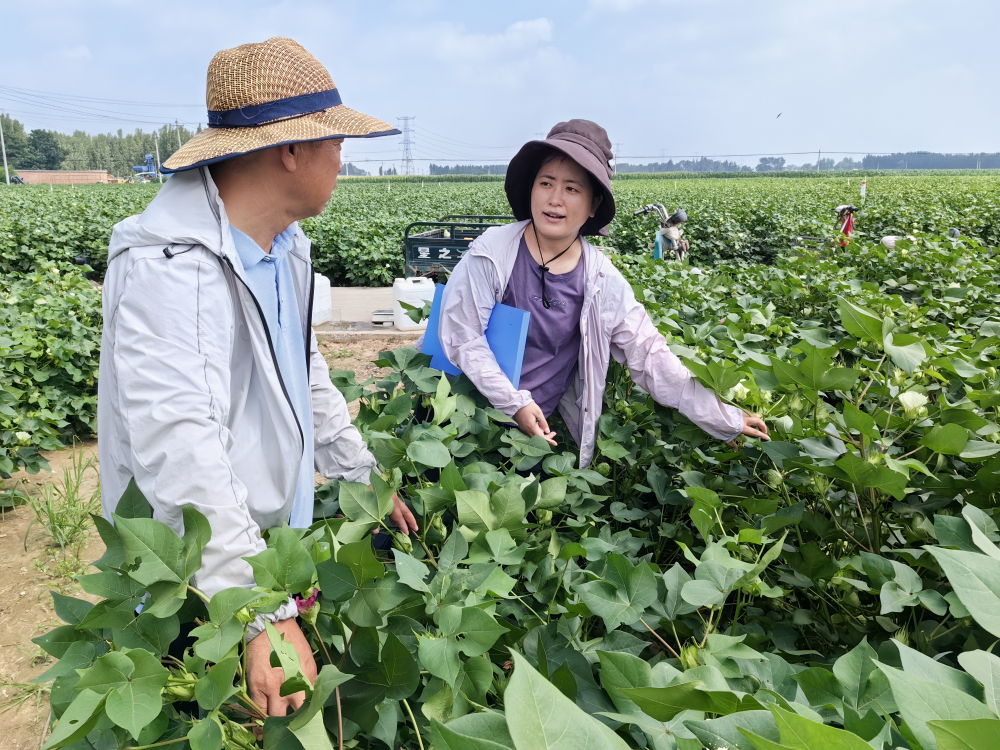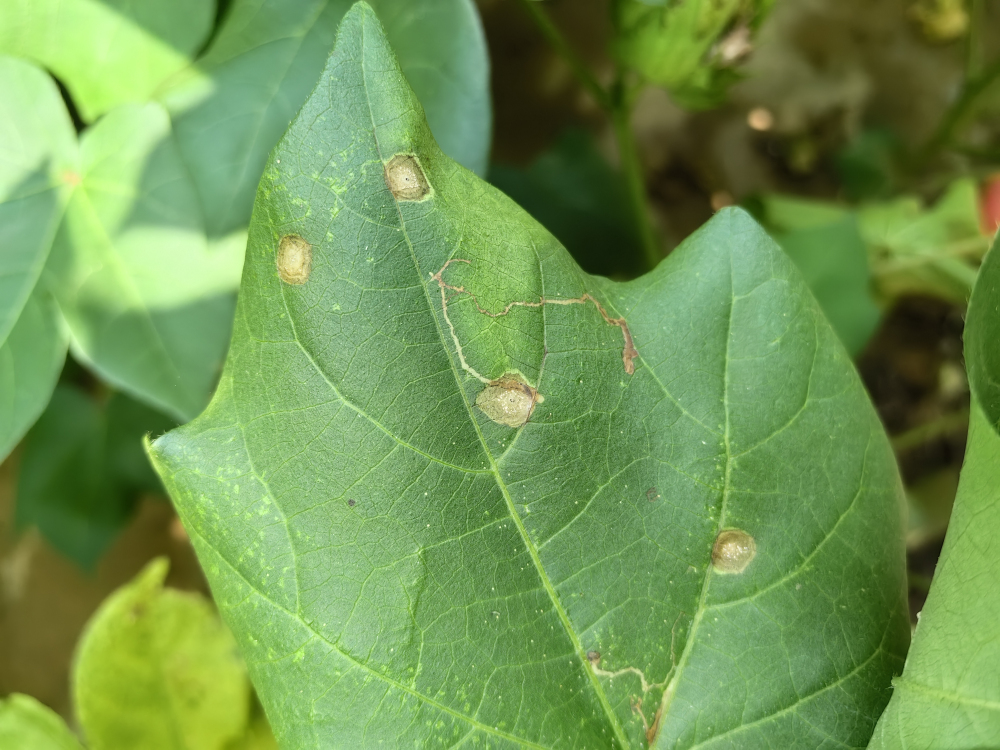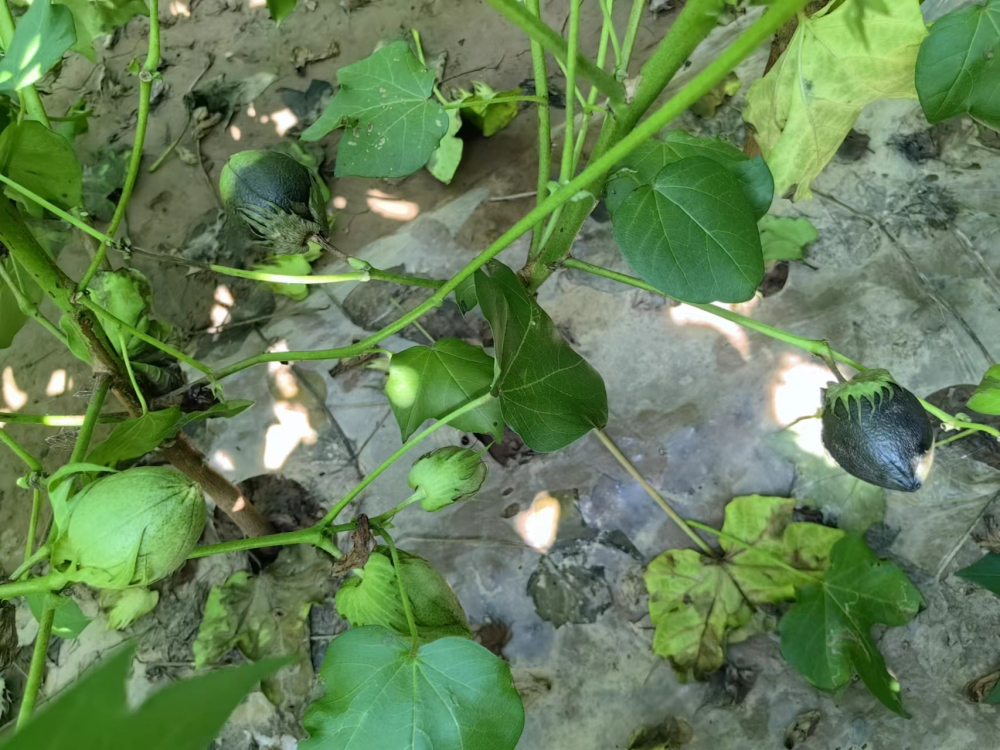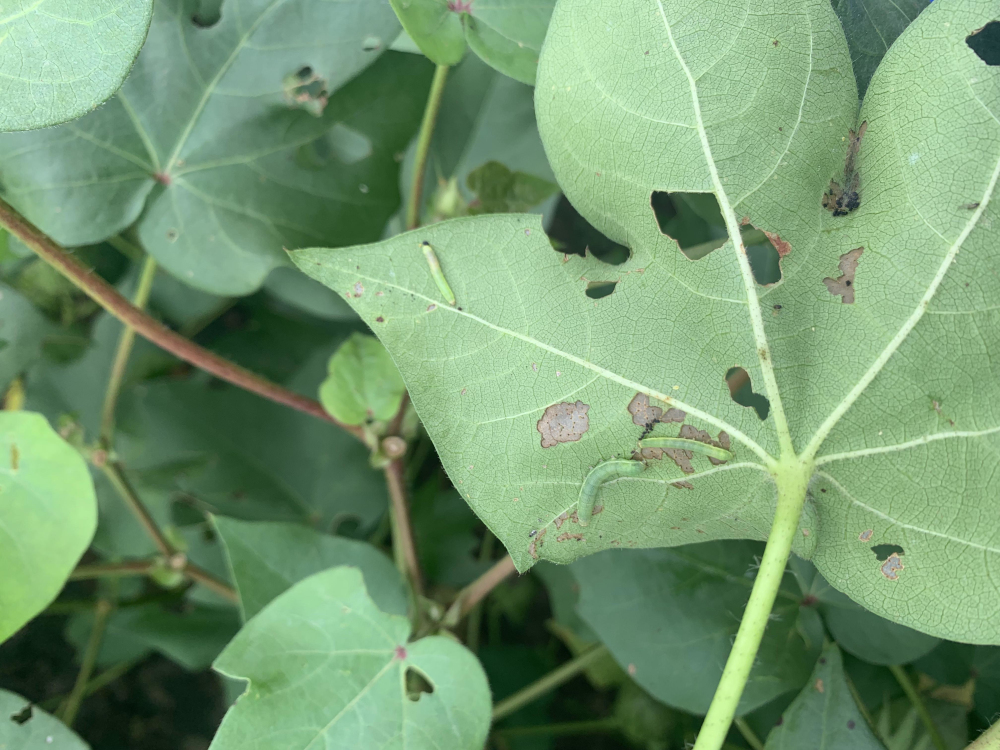Affected by the No. 5 typhoon "Doksuri", heavy rainfall occurred in most areas of Hebei province from July 29 to 31, with heavy rainstorm to extremely heavy rainstorm in some areas. Xingtai City is the main cotton producing area in Hebei, and currently cotton is in a critical period of boll setting. On August 3, a delegation led by Associate Researcher AN Jingjie from the Institute of Plant Protection went to Weixian County, the main cotton producing area of Xingtai, to provide post-disaster technical services for cotton production.

Investigation showed that the rainfall in Weixian County was 130 millimeters, and there was water accumulation in some low-lying cotton fields. Some cotton plants were lodging, and the field humidity was too high. Cotton boll rot disease began to occur, and the population of beet armyworm and tobacco whitefly significantly increased. In response to these problems, Associate Researcher AN Jingjie proposed management measures and suggestions as follows:
1.Cotton fields with standing water should be drained as soon as possible, and lodging cotton plants should be supported and soil should be placed at the roots to prevent further lodging.
2.Spray mepiquat chloride to prevent cotton from vigorous growth after rain, the amount could be appropriately increased to 5.0-7.0 grams/667㎡.
3.25% Cuaminosulfate water solution can be sprayed with 26-35 milliliters per 667㎡, and 25% Pyraclostrobin suspension agent with 40-50 milliliters per 667㎡ to prevent and control cotton field diseases. At this time, cotton field diseases are concentrated in the middle and lower parts of the cotton, so it is important to spray properly.
4.It can be used to control the larvae of Noctuidae by using 8.8% Emamectin benzoate+tebufenozide emulsifiable solution 30-40 ml/667㎡, and 50% sulfoxaflor water dispersible granules 10-13 g/667㎡ to control tobacco whitefly.



Experts focused on examining the disaster situation of large-scale growers and proposed field management techniques based on the current situation of cotton fields. By actively implementing the response measures, the impact of continuous rainfall on cotton could be effectively reduced.
(Source from www.hebnky.com)